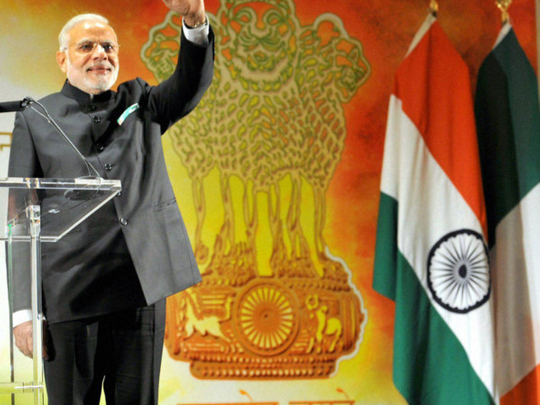
Narendra Modi is India’s first tech-savvy, social media-enabled Prime Minister. He has 15 million followers on Twitter. He won last year’s election with the help of 10-feet holograms that allowed him to make live addresses to more than 100 election rallies simultaneously in the world’s largest democracy.
This week, he will be the first Indian premier to set foot in California in more than 30 years when he visits Silicon Valley, where he is due to meet the bosses of Apple, Tesla Motors, Google, Microsoft and Adobe. The last three CEOs are of Indian origin. On Sunday, Modi and Facebook founder Mark Zuckerberg will hold a question-and-answer session at the company’s headquarters. “This is a Townhall you shouldn’t miss,” Modi said on Facebook, enthusing about India’s role as a hub for tech start-ups.
Modi is also on course to become India’s most-travelled leader. He relishes his role as global ambassador, whether he is meeting his friend “Barack” (Obama) or trying traditional archery in Mongolia.
Back home in India, though, ministers from Modi’s Bharatiya Janata Party (BJP) and some of his Hindu fundamentalist supporters are starting to look anything but modern. Nor do they even pretend to have an open, internationalist view of the wider world with which Modi wants to engage.
Since he took office, the government or its puritanical Hindu political allies have imposed bans on the consumption of beef and other meat in different states, campaigned against kissing in public, raided hotels where unmarried couples were meeting, tried to Hinduise school textbooks and ban inconvenient works of history, seized control of cultural institutions and opposed the spread of the English language.
They have also harassed non-government organisations such as Greenpeace and the Ford Foundation, which once funded an activist who wants Modi to stand trial for his role in the Hindu-Muslim bloodbath in Gujarat in 2002.
At first, these actions were so discreet that New Delhi could plausibly deny there was any concerted effort to impose a majoritarian, anti-foreign Hindu agenda on this diverse nation of 1.3 billion people. “It’s a kind of frightening situation, but because it’s scattered, people are not seeing the connection,” says Shiv Visvanathan, a political analyst who contrasts the “technocratic” Modi of foreign travels with the “communal” prime minister of domestic politics.
Yet, the government already seems to be abandoning its earlier discretion. “We will cleanse every area of public discourse that has been westernised and where Indian culture and civilisation need to be restored — be it the history we read, our cultural heritage or our institutes that have been polluted over years,” Mahesh Sharma, the Union Culture Minister, was quoted as telling leaders of the Rashtriya Swayamsevak Sangh (RSS), the parent body of the BJP, earlier this month.
One theory about the latest surge of overt bigotry is that the BJP is desperate to win the forthcoming state election in Bihar by polarising voters and winning over the majority Hindus. In the internet age, however, Modi and the BJP cannot deploy one set of cultural values for domestic use while displaying an entirely different set to the young and mostly liberal investors of Silicon Valley — and expect no one to notice.
Indian-American opponents of Modi have launched a website called modifail.com and called for a Silicon Valley protest on Sunday against religious violence, cultural fundamentalism and the erosion of civil liberties. More than 100 US university academics involved with South Asia, most of Indian origin, have urged Silicon Valley entrepreneurs not to forget their corporate responsibility codes when dealing with a Modi government they characterise as alarmingly authoritarian.
Modi may have to decide whether he wants to be leader of an ancient Hindu civilisation too proud to think it needs help from the outside world, or of a modern, outward-looking nation of young people even more tech-savvy than he is. As Visvanathan says, Modi and his backers are vainly trying to keep modernity and western values in separate boxes. “It doesn’t quite work,” he says.
— Financial Times








